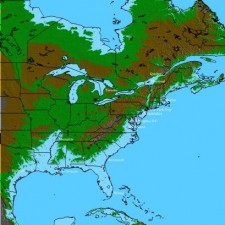Sea Level
A Rising Trend
An estimated 150 million people live within one meter above the sea and would feel the impact if sea level were to rise substantially in the coming decades. Records of sea level based on tide data go back more than 100 years and, since the advent of satellite altimetry 20 years ago, near global measurements of sea level are now available. These records tell us that sea level undergoes fluctuations on many timescales, spanning days to centuries and longer.
The satellite-inferred global mean sea level rise over the past 20 years to the present has been roughly three millimeters per year. However, regional trends vary by almost an order of magnitude from the global mean. Thus, sea level has risen by more than a centimeter per year in parts of the western tropical Pacific, whereas it has actually dropped in the eastern Pacific.
A Giant Inverse Problem
Sea level is affected by a fascinating spectrum of geophysical processes that are intrinsically linked, including:
- changes in the mass distribution of the atmosphere and cryosphere
- undulations in the mantle of the Earth’s crust just below the oceans and polar ice sheets (glacial isostatic adjustment and post-glacial rebound)
- steric effects due to changing ocean temperatures and salinity
- ocean circulation changes
- changes in Earth’s rotation
Such factors make accurate sea level determination a challenging subject of earth science in general and climate science in particular.
Researchers at MIT are phrasing sea level as a giant inverse problem in which information of all kinds—observations and models of key relevant processes—are drawn together and carefully weighted with their respective uncertainties. Our goal is to put recent sea level change observed directly by altimetry into the context of reconstructions from the tide gauge and paleoaltimetric record.
Key Questions We’re Exploring
- To what extent does the paleorecord from the last deglaciation provide strong constraints on the potential for future mass loss of polar ice and future sea level rise?
- What is required to develop predictive capabilities of sea level changes and ice sheet mass loss together with reliable uncertainty estimates over the coming decades to centuries?







